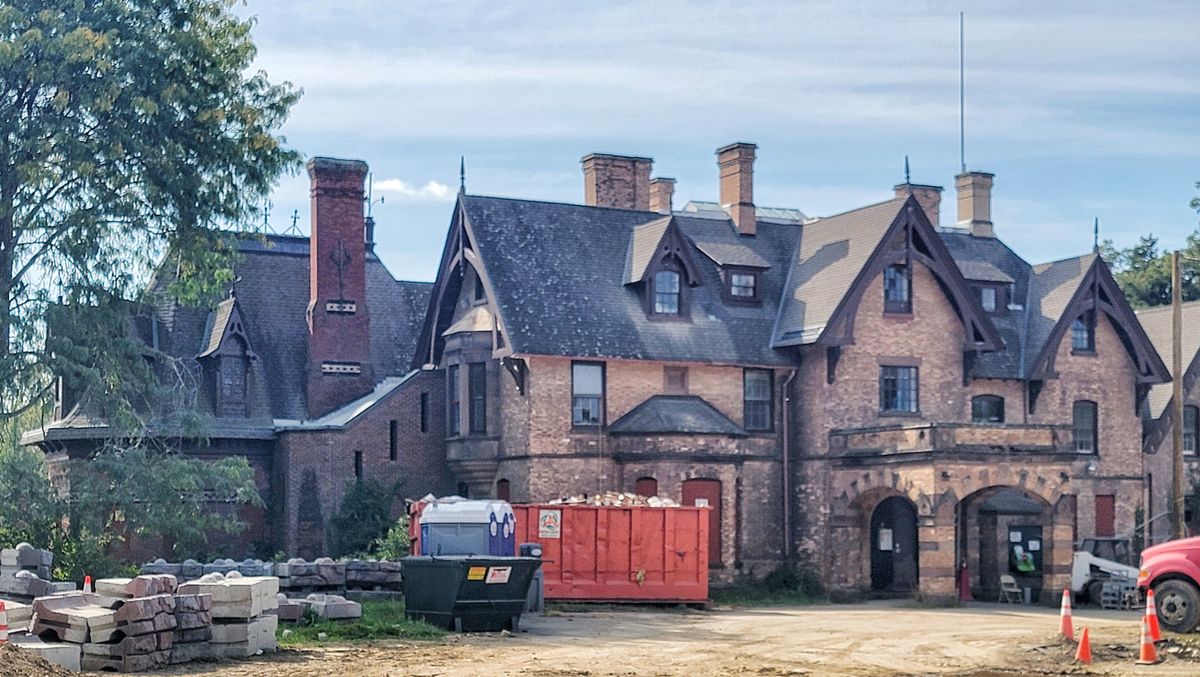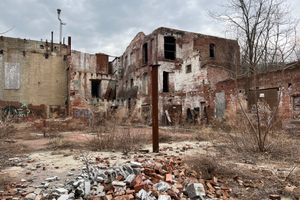About
A few miles outside the town of Beacon, in upstate New York, is an empty Victorian mansion.
Once built for the Civil War officer General Joseph Howland in 1859, and called Tioranda, the gothic house was turned into America's first privately licensed psychiatric hospital in 1915. Closing its doors 16 years ago, it has lain abandoned ever since. Bordering the forests of the highlands overlooking the Hudson River, the hospital was surrounded by over 60 acres, including a now deserted swimming pool, gymnasium, and golf course. Today, rooks nest in the empty spires, disturbed by no one. Once reserved for the very wealthy, this is the sanatorium where a desperate F. Scott Fitzgerald took his beloved wife Zelda in search of a cure.
Clarence Slocum was a Scottish doctor who specialized in progressive attitudes towards treating mental health. Renaming the building Craig House, Slocum, followed by his son Jonathan, believed that his patients could be cured by intensive talk therapy, coupled with fine dining and recreational pursuits like golf, skiing, and painting. For decades it was America's most prestigious rehabilitation home, the perfect haven for patients to be cured.
In reality it was a place of great sadness and despair. Frances Seymour, wife to Henry Fonda and mother to Jane Fonda, committed suicide here, cutting her throat with a razor in one of the turrets in 1942. Rosemary Kennedy was sent here after her controversial lobotomy when she was just 23 left her with the mental age of a two year old.
In early 1934, suffering from the early stages of schizophrenia, Zelda Fitzgerald was convalescing in the Phipps Clinic, part of Johns Hopkins in Baltimore. F. Scott Fitzgerald was editing the galleys of Tender is the Night, drawing on his wife's letters to form the character of the beautiful and doomed Nicole Driver. Zelda read the early draft of the novel and was distraught; she was placed under constant supervision for fear she would take her own life.
F. Scott Fitzgerald decided to move her to Craig House and Dr. Slocum. An archive of their correspondence and of her treatment is available at the Princeton University Library, and makes for poignant reading. He wrote, "I left my capacity for hoping on the little roads that led to Zelda’s sanitarium.” She would spend her time there playing golf and painting, in between sessions with Dr. Slocumb. She wrote to Scott, "there is everything on Earth available and I have a little room to paint in with a window higher than my head the way I like windows to be.”
But for Zelda, no cure would be found among the sloping lawns and green fairways of Craig House. The monthly fees at the hospital were $750, highly expensive for 1934, especially for a struggling author. As her condition worsened and the bills became unmanageable, Scott arranged to have her moved to a cheaper hospital, the Highland in Asheville, North Carolina. But the last letter Zelda ever wrote to Scott would be from Craig House: "whenever you are ready to make the change, I will be ready to go. I am awfully home-sick in spite of the beauties of this place.”
The lives of the golden couple of the Jazz Age ended in tragedy. Seeing each other for the last time in 1938, Scott moved to Hollywood to work as a writer, where his increasing alcoholism led to his death in 1940. Zelda died in 1948 when a fire broke out in the kitchen at Asheville hospital. Locked in her room awaiting electroshock therapy, she burnt to death.
The once exclusive hospital closed in 1999. But the tragedy of the house doesn't end there. It was bought in 2003 by Robert Wilson, a Wall Street hedge fund manager. In December of 2013, aged 87 and recently diagnosed with a stroke, he jumped out of the window of his Upper West Side apartment building to his death. Visiting today, it is a silent and haunting place. The inside remains perfectly preserved, as though the good doctor and his glamorous patients had suddenly just left the room. As Zelda at her most troubled wrote to her beloved husband, "The sense of sadness and of finality in leaving a place is a good emotion; I love that the story can't be changed again and one more place is haunted -- old sorrows and a half-forgotten happiness are stored where they can be recaptured." The future of the estate remains undecided. Until then, it lies there neglected and forgotten about.
Related Tags
Know Before You Go
The sanitarium is very much closed and locked. Even the road leading to it is blocked by a tree and cement blockades with "No Trespassing" signs everywhere. As of 2018, the building has a new owner who is currently restoring it and police presence is big around here.
Community Contributors
Added By
Published
January 16, 2015
Sources
- http://articles.baltimoresun.com/2002-06-23/entertainment/0206230314_1_zelda-sayre-zelda-fitzgerald-scott-and-zelda/3
- http://archive.poughkeepsiejournal.com/assets/pdf/BK117554911.PDF
- http://wigwameconomy.com/craig-house-owner-dies/
- http://americanmentalhealthfoundation.org/2013/05/the-great-gatsby-zelda-fitzgerald-and-craig-house-hospital/
- http://www.nytimes.com/1996/12/01/magazine/how-crazy-was-zelda.html?pagewanted=1
- http://findingaids.princeton.edu/collections/C0745
























































































